As of now, there are two boards that you can make:
The early board (using the old name, "LEVER") is larger and fits in your hand. It features an OLED screen and a pot for adjusting the frequency of the waveform. I started with this board so I could have a quick way to prototype different waveforms and frequencies without having to use an external Android app. The bulk of the board's space is dedicated to the ergonomic placement of large grounding pads (which, when you grasp the board, naturally touch the sides of your grasping hand) and a central signal pad where the texture changes. The intention is that you would use this board to determine the ideal waveform and texture for your application; the downside is that it's way more expensive to get fabbed, because it's larger.
The second board, "WEFT v1," is more oriented towards embedding - it's much smaller and cheaper to fab, and it includes an RFduino SMD module that handles the waveform control (it takes BLE commands from an Android app and sends them over i2c to the Teensy, which is free to focus on keeping the DAC's timing under control).
The LEVER board works well, especially with a fresh 9v. The WEFT board is working OK, but it needs improvement: I altered some of the components used in the WEFT board to facilitate easier sourcing, and I'm still working out which swapped components are improving performance and which are degrading performance.
Bills of Materials:
Github repo (firmware, boardfiles)
This is the Android app I'm using to send two-byte commands to the firmware. It's simple, but it's easy to compile and I'm hoping to have a more dedicated app soon.
 AKA
AKA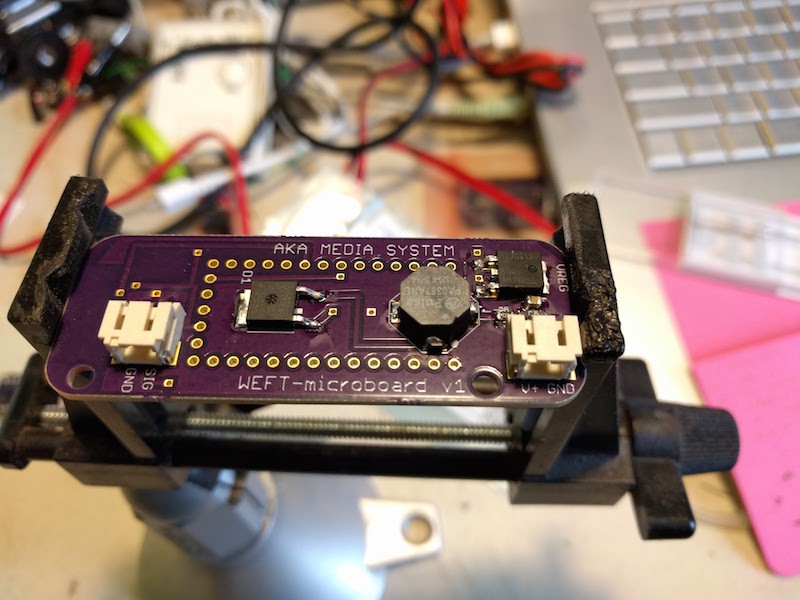
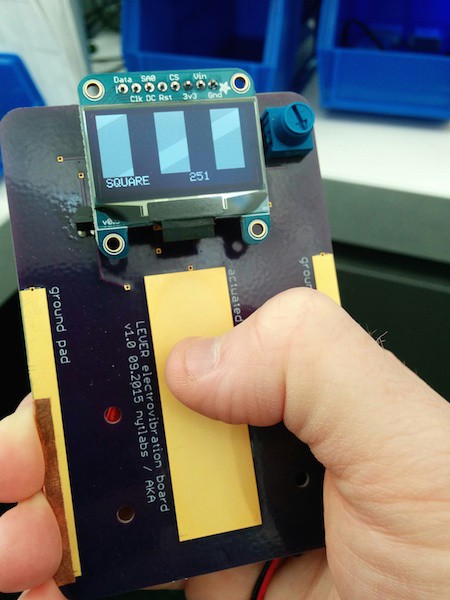
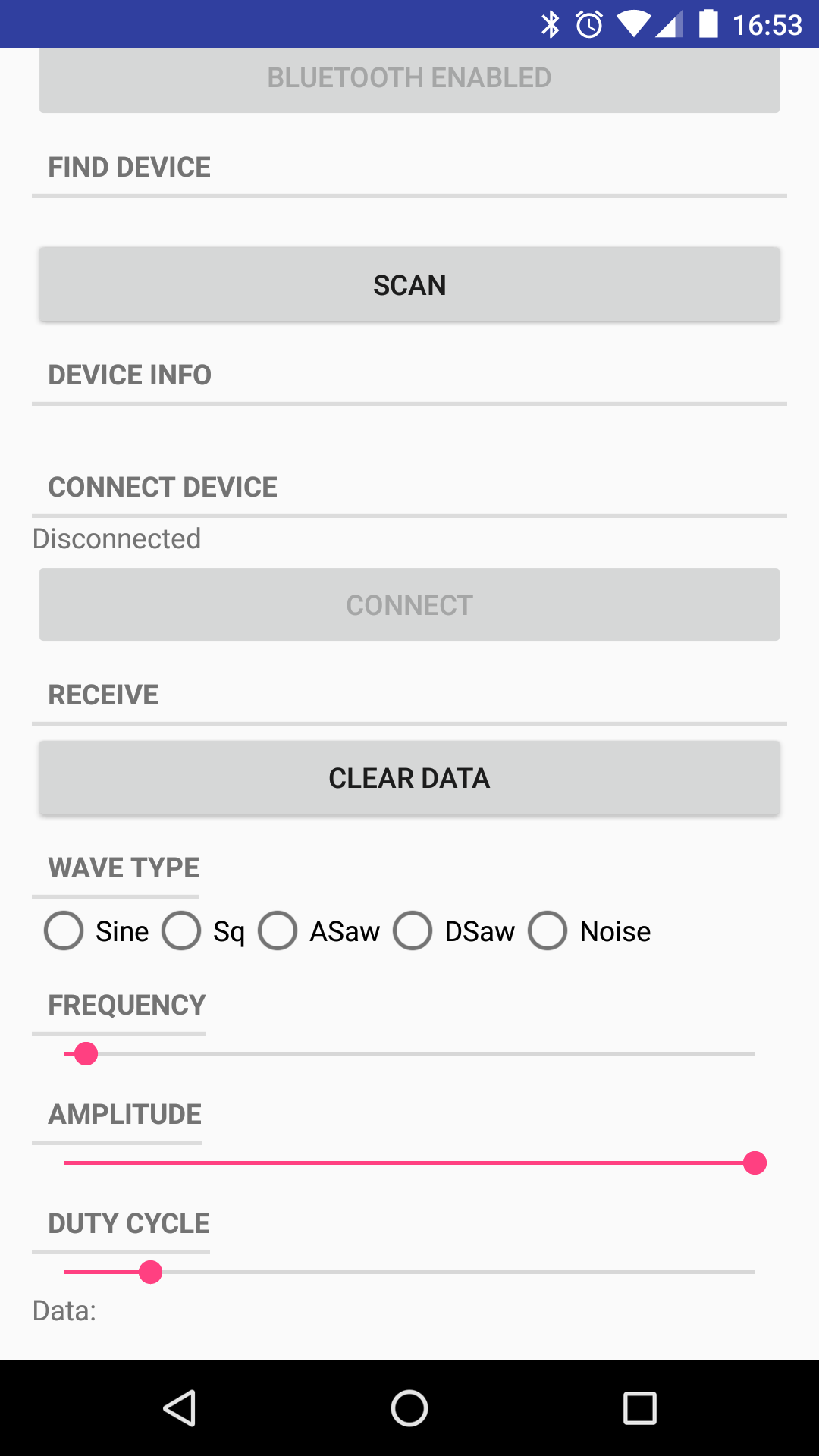


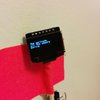

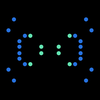

I need to read the whole thing, but I noticed a texture effect by accident a while ago when I was working with an ungrounded linear robot which had a floating power supply. I think there was some capacitive coupling such that the metal casing was a few hundred volts, but allowed very little current to pass when touched. For a short time I thought it was the texture of the metal.